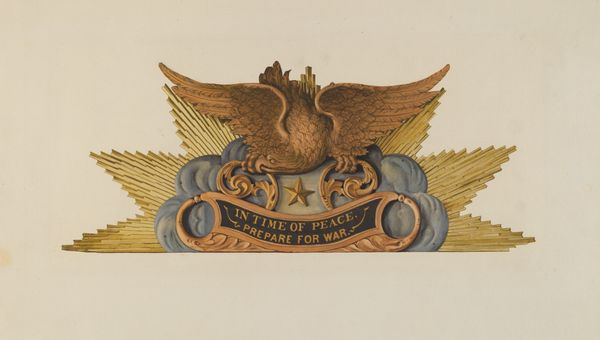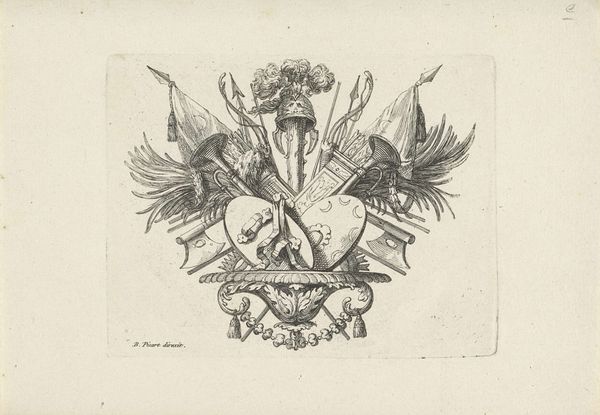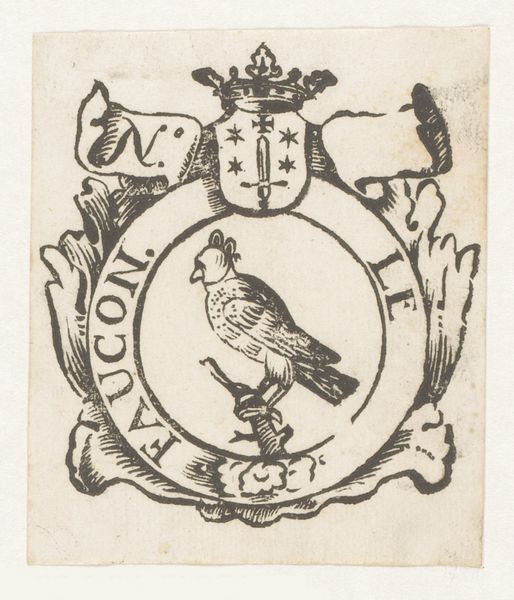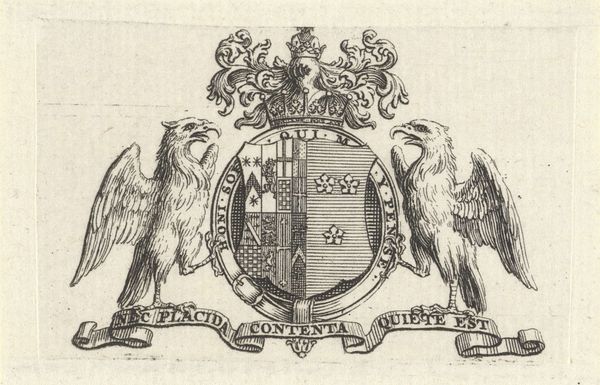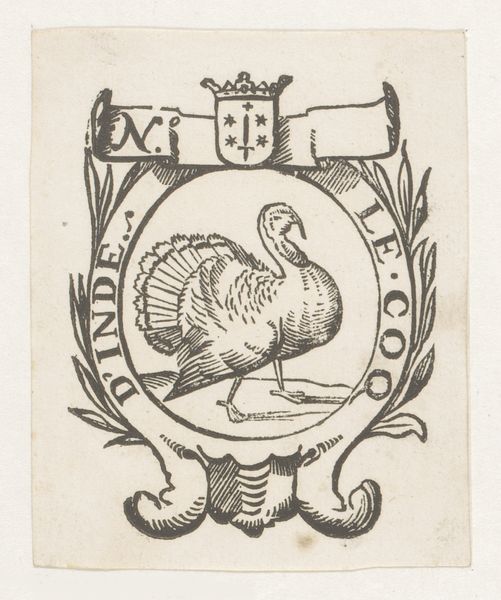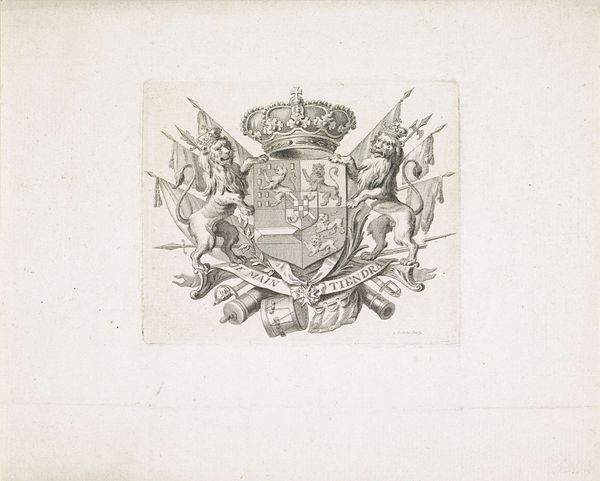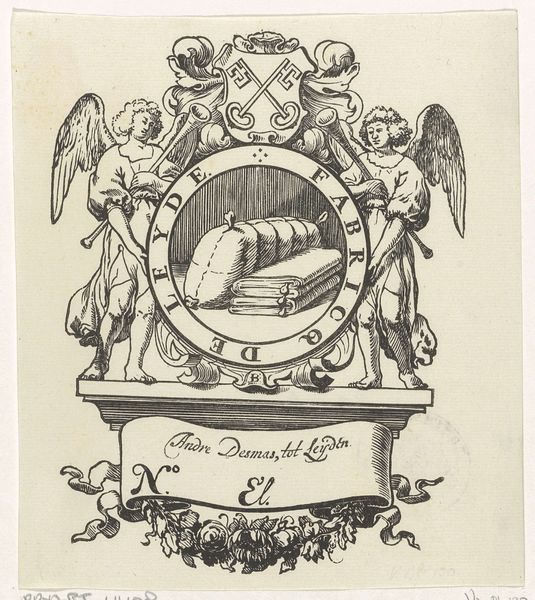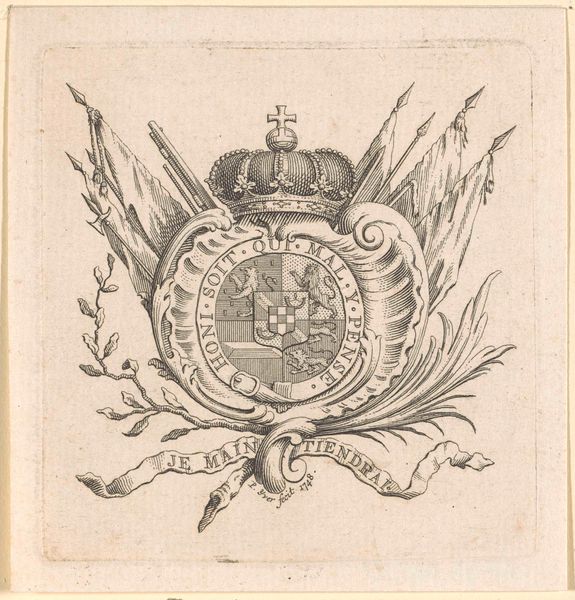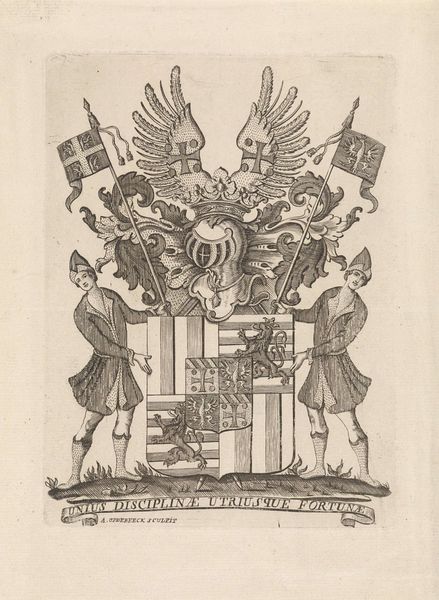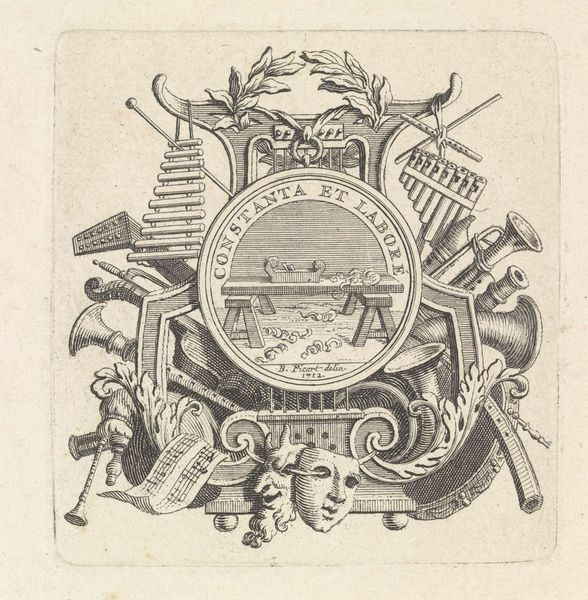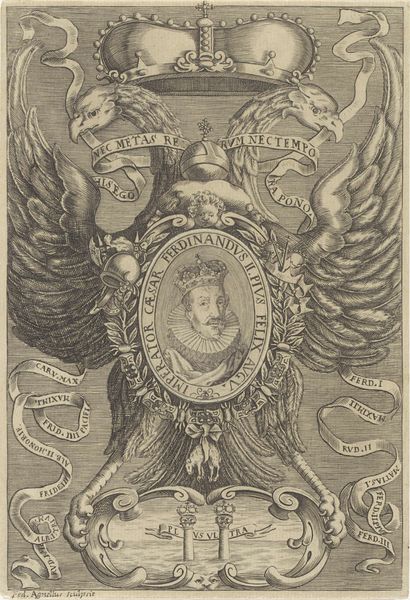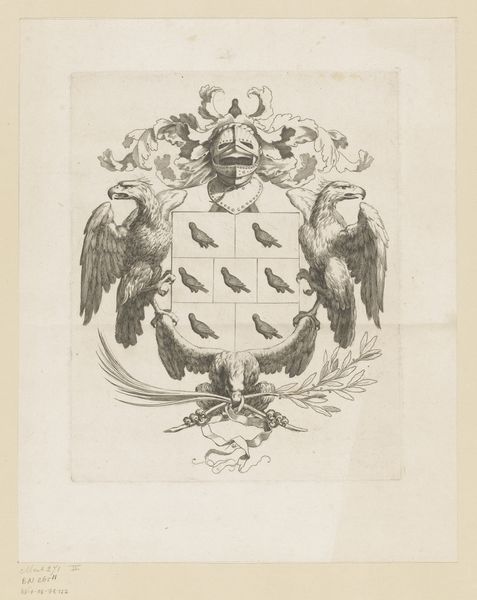
Dimensions: height 129 mm, width 114 mm
Copyright: Rijks Museum: Open Domain
Curator: This engraving from the Rijksmuseum collection is titled "Adelaar met afbeelding van Neptunus en Mercurius," or "Eagle with depictions of Neptune and Mercury," made sometime between 1776 and 1851 by Daniël (I) Veelwaard. What are your initial thoughts? Editor: It feels overwhelmingly… declarative. Look at the sharp, proud eagle dominating the top. It’s a strong statement, wouldn't you say? Curator: Absolutely. The eagle as a symbol of power and vigilance is consistent across centuries and cultures, isn't it? The imagery presents such an explicit hierarchy. Above we have the head of an eagle watching the classical Gods dominating the sea with Neptune. Editor: And the inscription "KRUISTOGT EN KAAPVAART"… Crusade and Privateering. That positioning alongside these powerful figures feels like a direct justification for colonial sea power and aggression. Curator: That ribbon literally enshrines conquest! Considering that both a Crusade and Privateering—licensed piracy—suggest a cultural permission to acts that, by any other name, could seem reprehensible. But observe the central figures—Neptune, god of the sea, holds his trident as a badge of honor; and Mercury, the winged messenger, is bestowing some sort of divine grace upon it. Editor: The placement of Mercury there is chilling because it directly aligns commerce, represented by Mercury, with maritime force. By the way, there are heavily armed galleons at the bottom of this print! To add even more violence to this composition, the dolphins that carry figures on their backs resemble monstrous, fanged beasts, quite divorced from any of the dolphins I have known in the Mediterranean or Caribbean sea. Curator: The symbology in Veelwaard’s engraving offers insight into the mindset that legitimized exploration, trade, and war. There is a visual vocabulary linking economic gain with divine will. Editor: Exactly. It's a potent mix of classical allusion and justification. To read the cultural assumptions baked into such an image is both fascinating and, frankly, disturbing. It makes me question what imagery today serves a similar function—sanctioning policies and beliefs we might otherwise find abhorrent. Curator: That makes me see this work through such a critical and valuable perspective. These lasting icons and symbolic structures truly retain their power throughout history. Editor: Absolutely, by critiquing past images we could potentially reveal how certain iconographies continue to legitimize actions in the present.
Comments
No comments
Be the first to comment and join the conversation on the ultimate creative platform.
